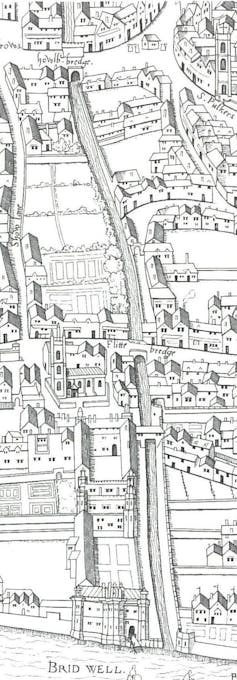While a recent flurry of stories and reports could make this crisis feel very new to us, river pollution and concerns over it have a long history. This is something I have uncovered while doing a PhD focused on attitudes to water in England between 1550 and 1750, a period historians refer to as “early modern”. My research shows that, even in the era of Shakespeare’s “filth-clogged” Thames, river pollution was far from acceptable.
Precisely when the first river protection laws emerged in Britain is not clear, though we know that Roman law contained regulations with fines for polluting water, so early ideas may have been brought over through their occupation.

From as early as 1489, protections for rivers were starting to take on language that made clear that preservation was a chief concern. An act from the first years of Henry VII’s reign made the Thames and its protection the domain of the mayor of London as its “conservator”.
This usage in the context of the Thames represents, according to academics Keith Thomas and Bruce Boehrer, the first use of the idea of “conservation” in the English language in relation to protecting the natural world.
But this was far from a new idea. When challenged on his right to the river by later kings in the 1500s, the then mayor pointed out that “conservation and correction” of the Thames had fallen to city leaders since at least 1407.
Pollution of the river was a key concern, and this “conservation” was specifically defined in terms of preventing people from “annoying” the river by casting “any Soil, Dust, Rubbish, or other Filth into it.”
Despite these restrictions, Tudor London clearly did cast “other Filth” into its rivers. The Fleet river (left) was a “notorious” sewer by the 17th century, and as the map shows, it flowed directly into the Thames.